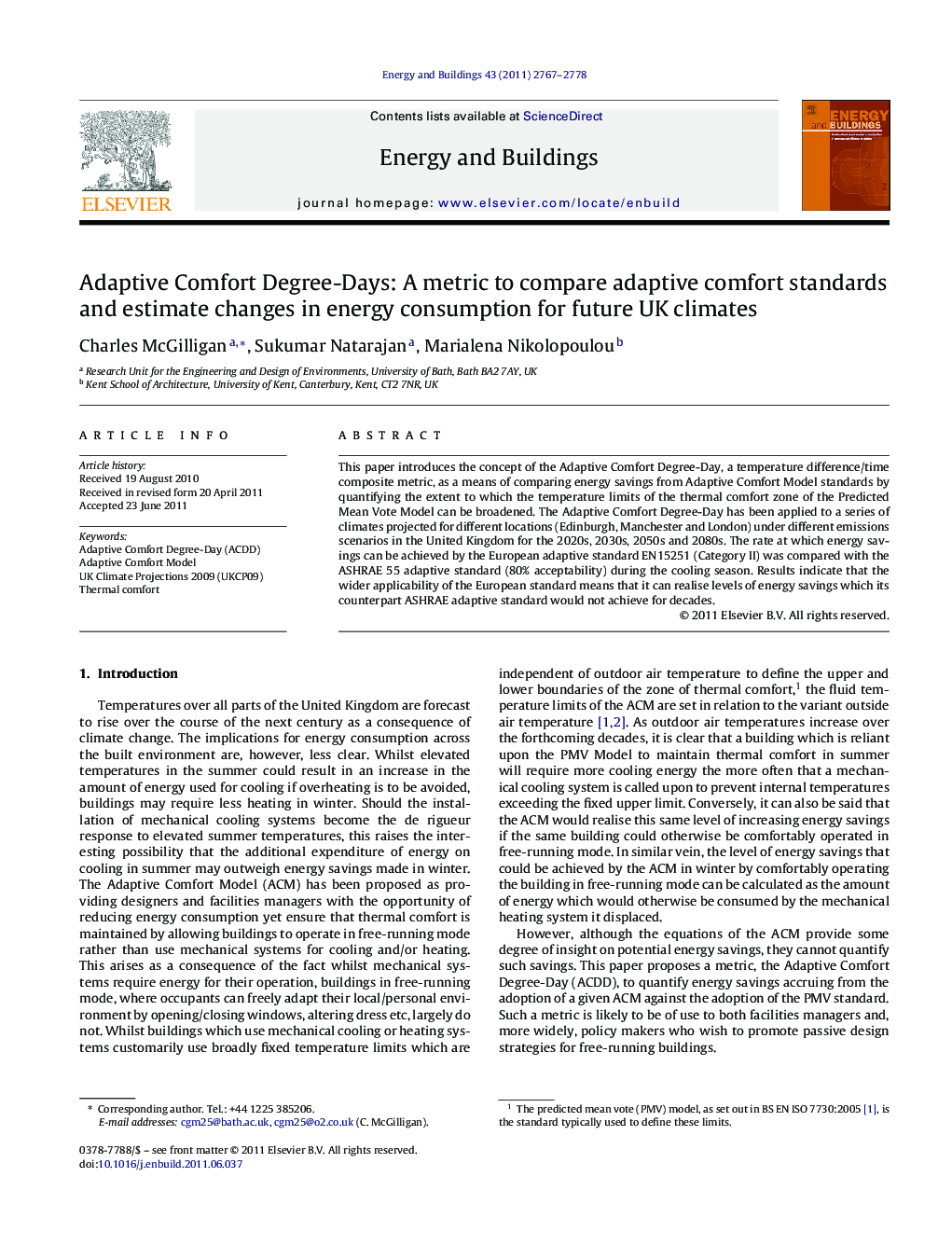| Article ID | Journal | Published Year | Pages | File Type |
|---|---|---|---|---|
| 264088 | Energy and Buildings | 2011 | 12 Pages |
This paper introduces the concept of the Adaptive Comfort Degree-Day, a temperature difference/time composite metric, as a means of comparing energy savings from Adaptive Comfort Model standards by quantifying the extent to which the temperature limits of the thermal comfort zone of the Predicted Mean Vote Model can be broadened. The Adaptive Comfort Degree-Day has been applied to a series of climates projected for different locations (Edinburgh, Manchester and London) under different emissions scenarios in the United Kingdom for the 2020s, 2030s, 2050s and 2080s. The rate at which energy savings can be achieved by the European adaptive standard EN15251 (Category II) was compared with the ASHRAE 55 adaptive standard (80% acceptability) during the cooling season. Results indicate that the wider applicability of the European standard means that it can realise levels of energy savings which its counterpart ASHRAE adaptive standard would not achieve for decades.
► Adaptive Comfort Degree-Day – metric to estimate adaptive standard energy savings. ► Adaptive Comfort Degree-Day concept is validated using dynamic simulation modelling. ► Adaptive standards ASHRAE 55 (80% acceptability) and EN15251 (Cat 2) are compared. ► Potential energy savings for future climates projected by UKCP09 data are calculated. ► EN15251 savings by 2020s are not matched by ASHRAE 55 savings until 2080s or later.
